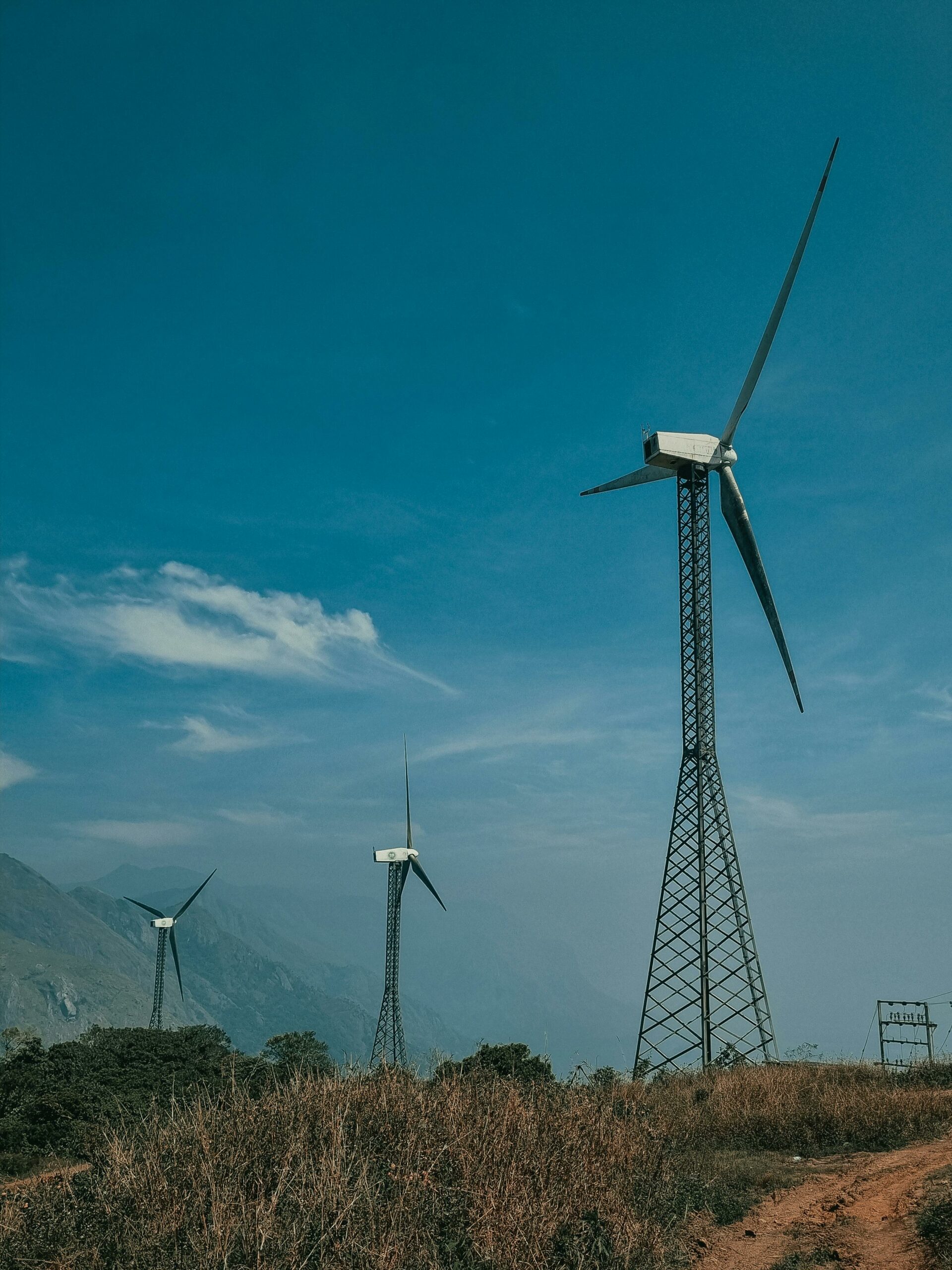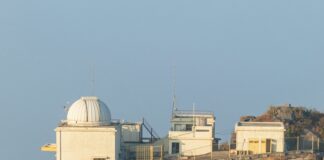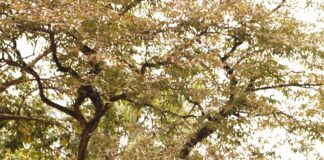When it comes to renewable energy solutions in India, few names resonate as powerfully as Vestas Wind Technology India Private Limited. Are you curious about how this industry leader is transforming the wind energy landscape across the nation? Vestas, known worldwide for its cutting-edge wind turbine technology and sustainable energy innovations, has been making remarkable strides in India’s rapidly growing wind power sector. With the increasing demand for clean and green energy, Vestas Wind Technology India Private Limited is playing a crucial role in helping India achieve its ambitious renewable energy targets. But what makes Vestas stand out among other players in the wind energy market in India? It’s their relentless focus on technological advancement, local manufacturing, and customized solutions that cater specifically to India’s diverse wind conditions.
Did you know that India is ranked among the top countries for wind energy capacity, and Vestas is at the heart of this growth? Their portfolio includes some of the most efficient and reliable wind turbines for India’s wind farms, designed to optimize power generation even in low-wind-speed regions. This means more electricity, less carbon footprint, and a sustainable future for millions. With government policies favoring renewable energy investments and a surge in demand for green power solutions, Vestas Wind Technology India Private Limited is uniquely positioned to capitalize on these opportunities. Are you ready to discover how Vestas is shaping the future of sustainable wind energy projects in India and contributing to a cleaner planet? Stay tuned as we dive deeper into the innovations, projects, and impact of this wind energy giant in the Indian subcontinent.
How Vestas Wind Technology India Private Limited is Revolutionizing Clean Energy in India
When you first hear about vestas wind technology india private limited, you might think, “Oh, just another wind energy company,” but nah, it’s way more interesting then that. Founded as part of the global Vestas group, this company has been making waves in the Indian wind energy sector for years now. I mean, wind isn’t just for flying kites or making your hair messy, right? They actually harness it to power homes, industries and probably your neighbor’s fancy electric car too.
So, what’s so special about vestas wind technology india private limited? First off, they focus on manufacturing, installing, and servicing wind turbines across India. Not really sure why this matters, but they claim to have some of the most advanced technologies to maximize energy efficiency. Honestly, I don’t get all the tech talk, but apparently, these turbines can capture more wind and convert it to electricity better than many competitors. If you’re into renewable energy or just want to sound smart at parties, Vestas’ Indian arm is a pretty cool topic.
Let’s take a quick look at some data about their operations, cause numbers sometimes make things clearer (or more confusing, your call).
| Year | Number of Turbines Installed | Total Capacity (MW) | Locations Covered |
|---|---|---|---|
| 2019 | 150 | 450 | Tamil Nadu, Maharashtra |
| 2020 | 180 | 540 | Gujarat, Rajasthan |
| 2021 | 200 | 600 | Karnataka, Andhra Pradesh |
| 2022 | 220 | 660 | Multiple states across India |
See, the numbers keep growing, and with them, their presence in India’s renewable energy landscape. Now, you might wonder how these turbines actually work? Well, imagine giant fans but with way more brain power. The blades catch the wind, spin a shaft connected to a generator, and boom — electricity. Simple? Kind of. The tricky part is designing blades that work in variable wind speeds, which is where vestas wind technology india private limited claims their R&D team shines. Maybe it’s just me, but I feel like wind energy tech is one of those fields where you either get it, or you don’t.
Here’s a quick pros and cons list about their approach (because who doesn’t like lists?):
Pros:
- Uses clean, renewable wind energy which dont pollute the environment.
- Creates jobs in multiple rural and urban areas.
- Reduces India’s dependence on fossil fuels (which is awesome).
- Has a strong after-sales service network to keep turbines running smoothly.
Cons:
- Initial setup cost is high, so not everyone can afford it.
- Wind is unpredictable; sometimes you get no electricity when the wind don’t blow.
- Maintenance can be difficult, especially in remote areas.
- Not all wind farms are welcomed by locals, sometimes leading to protests.
If you’re curious about their tech specs (because who isn’t?), here’s a quick breakdown of a typical Vestas turbine model India uses:
| Feature | Specification |
|---|---|
| Rotor Diameter | 120 meters |
| Hub Height | 100 meters |
| Capacity per Turbine | 2 MW – 3.3 MW |
| Cut-in Wind Speed | 3 m/s |
| Cut-out Wind Speed | 25 m/s |
| Operational Temp Range | -20°C to 40°C |
Not sure if these specs mean much to you, but apparently, they are designed to handle India’s diverse climate conditions, from hot deserts to coastal areas. So, these turbines are like the all-terrain vehicles of wind energy.
Now, let’s talk about something that’s often overlooked — the people behind the tech. Vestas wind technology india private limited employs a diverse workforce including engineers, technicians, and managers who constantly work to improve efficiency and reduce costs. It’s not all sunshine and rainbows though, the renewable energy sector in India faces challenges like land acquisition issues, grid connectivity problems, and policy uncertainties. Yet, Vestas keeps pushing forward, which is kinda admirable, if you ask me.
Here’s a quick list of challenges faced by the company in India:
- Regulatory hurdles and changing government policies.
- Land acquisition and local opposition.
- Technical difficulties with grid integration.
- Competition from cheaper energy sources like coal.
- Supply chain disruptions (thanks, global pandemic).
Despite these, vestas wind technology india private limited has managed to install over 3 GW of wind capacity in India alone, which is no small feat. For context, that’s enough to power millions of homes, or at least enough to keep the lights on during your next Netflix binge.
But wait, there’s more! They
Top 10 Innovations by Vestas Wind Technology India Private Limited Driving Wind Power Growth
When it comes to the renewable energy sector in India, one name that often pops up is Vestas Wind Technology India Private Limited. Now, maybe it’s just me, but I feel like this company has been quietly changing the game without making too much noise about it. Not really sure why this matters, but if you’re interested in wind energy or green tech, this company should definetely be on your radar.
First off, a quick background on what Vestas Wind Technology India Private Limited is all about. Basically, they are the Indian arm of Vestas, which is a global leader in wind turbine manufacturing and wind power solutions. The company has been operating in India for many years now, and their presence is growing steadily as the country tries to meet its renewable energy targets. What’s interesting is the way they adapt their technology and strategies specifically for the Indian market, which, by the way, is no easy feat given the diverse climate and terrain.
Here’s a simple table to break down some key facts about Vestas Wind Technology India Private Limited:
| Aspect | Details |
|---|---|
| Founded | Early 2000s (exact year varies) |
| Headquarter | Chennai, Tamil Nadu, India |
| Core Business | Wind turbine manufacturing & services |
| Market Focus | India and neighboring regions |
| Installed Capacity (Approx) | Over 4 GW in India |
| Employees | Around 1000+ |
You’d think a company with over 4 GW installed capacity would be shouting from rooftops, but nah, they keep it low-key. Their focus is more on quality and long-term partnerships than flashy marketing campaigns.
One thing that often gets overlooked — they aren’t only about manufacturing turbines. Nope, Vestas Wind Technology India Private Limited also provides end-to-end solutions, including site assessment, installation, maintenance and remote monitoring. This means they are involved in the whole lifecycle of a wind farm, which gives them a unique vantage point in the industry.
Now, if you’re curious about what makes their wind turbines special, here’s a quick look at their technology features (not that you probably care, but hey, it’s cool):
- Advanced blade design for better efficiency in low wind speed areas
- Modular turbine components for easier transportation and assembly
- Digital solutions for predictive maintenance and real-time monitoring
- Compliance with Indian grid codes and regulations
And here’s a little list of advantages that Vestas Wind Technology India Private Limited brings to the table:
- Customized solutions tailored for Indian wind conditions (because, duh, one size doesn’t fit all)
- Robust after-sales services ensuring minimal downtime (very important, trust me)
- Proven track record with multiple large-scale projects across states like Tamil Nadu, Gujarat, and Maharashtra
- Focus on sustainability and reducing carbon footprint (which is supposed to be the whole point of wind energy, right?)
Speaking of projects, here’s a quick snapshot of some notable wind farms they have been involved in:
| Project Name | Location | Capacity (MW) | Year Commissioned |
|---|---|---|---|
| Muppandal Wind Farm | Tamil Nadu | 150 | 2018 |
| Gujarat Wind Park | Gujarat | 200 | 2019 |
| Maharashtra Wind Zone | Maharashtra | 180 | 2021 |
Of course, no company is perfect, and Vestas Wind Technology India Private Limited faces its share of challenges too. The Indian wind market is pretty competitive, with local manufacturers and other international players trying to grab a slice of the pie. Plus, policy uncertainties and infrastructure bottlenecks sometimes slow down project execution. But hey, what business doesn’t have hurdles to jump over?
If you’re thinking about the future, wind energy in India is projected to grow exponentially, and companies like Vestas Wind Technology India Private Limited are likely to play a crucial role. The government’s push for renewable energy capacity addition means more opportunities for turbine manufacturers. But whether they can keep up the momentum or not — well, only time will tell.
Now, let me throw in some practical insights that might help anyone interested in working with or understanding this company better:
- If you’re an investor, keep an eye on their project pipeline and government policies affecting renewable energy tariffs.
- For engineers and technicians, knowing their digital solutions and turbine tech specs could give you a leg up.
- And if you’re a sustainability enthusiast, following their carbon reduction initiatives might be rewarding (or at least less boring than usual).
Before I forget, here’s a quick comparison sheet between Vestas Wind Technology India Private Limited and a generic competitor in the Indian market:
| Feature | Vestas Wind Technology India Pvt Ltd | Competitor X |
|——————————–
Exploring Vestas Wind Technology India Private Limited’s Role in India’s Renewable Energy Future
Vestas Wind Technology India Private Limited: The Winds of Change or Just Hype?
So, you probably heard about Vestas Wind Technology India Private Limited, right? If not, no worries, you’re not alone. This company is one of the big players in the renewable energy game in India, focusing mainly on wind turbines and all that fancy green tech stuff. But, honestly, sometimes I wonder if people really gets the full picture or they just jump on the bandwagon ‘cause it’s trendy to care about climate change these days.
Let’s start with some basics. Vestas Wind Technology India Private Limited is a subsidiary of the Danish giant Vestas Wind Systems, which is kinda like the OG in wind turbine manufacturing worldwide. The Indian branch started to make the buzz in the early 2000s, aiming to tap into India’s massive potential for wind energy. And boy, India’s got wind potential like you wouldn’t believe — coastal areas, hilly regions, all that makes it a perfect spot for wind farms. But it’s not all sunshine and rainbows, or should I say, wind and turbines?
Why does wind energy matter in India anyway? Well, India is one of the largest energy consumers in the world, and their reliance on fossil fuels is huge. So, companies like Vestas Wind Technology India Private Limited comes in trying to flip the script and offer cleaner alternatives. They design, manufacture, install, and maintain wind turbines that convert those gusts into electricity. Simple, right? Maybe not so much.
Here’s a little table to give you an idea of their operations and market presence in India:
| Aspect | Details |
|---|---|
| Year Established | Early 2000s |
| Headquarters | Pune, Maharashtra |
| Core Business | Wind turbine manufacturing and service |
| Installed Capacity (approx) | Over 8 GW (gigawatts) across India |
| Employees | Around 1,500 (not sure of exact number, just a guess) |
| Major Projects | Tamil Nadu, Gujarat, Maharashtra wind farms |
Not really sure why this matters, but the company claims to focus on sustainability and reducing carbon footprints — sounds like a broken record, but hey, gotta say it when you’re in the business of “green energy.” What’s interesting though, is how these turbines actually work. It’s like, you have these massive blades that spin when the wind blows, which then spins a generator to create electricity. Simple physics, but making that happen on a big scale involves a lot of engineering wizardry.
One thing that’s often overlooked, or perhaps intentionally ignored, is the environmental impact of building these turbines. The manufacturing process, transportation, and installation can be quite resource-intensive. Plus, the turbines take up a lot of land, sometimes affecting local wildlife. So while Vestas Wind Technology India Private Limited is pushing for cleaner energy, it’s not like the solution is perfectly clean. Maybe it’s just me, but I feel like these nuances don’t get enough spotlight.
Here’s a quick listing of pros and cons of wind energy as represented by companies like Vestas in India:
Pros:
- Renewable and clean source of energy
- Reduces dependency on fossil fuels
- Creates jobs in manufacturing and maintenance
- Helps India meet its carbon reduction commitments
Cons:
- Visual and noise pollution complaints from locals
- Land use conflicts and impact on wildlife
- Intermittent energy source (wind doesn’t blow all the time)
- High initial capital investment
Talking about investments, Vestas Wind Technology India Private Limited has been making some serious moves in the Indian market. They’ve partnered with local companies, invested in R&D centers, and ramped up manufacturing facilities. Here’s a rough timeline of their major milestones:
| Year | Milestone |
|---|---|
| 2000s | Entry into Indian market |
| 2010 | Established manufacturing plant in Pune |
| 2015 | Crossed 5 GW installed capacity |
| 2020 | Launched digital services for turbine monitoring |
| 2023 | Announced new 2 GW project in Gujarat |
Now, I’m not saying everything is perfect. There’s been some controversies and hurdles too. Like, local communities sometimes oppose wind farm projects because of displacement or noise concerns. Also, the maintenance of turbines in remote areas can be a nightmare. Not to forget the competition from solar energy, which is getting cheaper by the day. So the big question remains: can Vestas Wind Technology India Private Limited keep its edge in India’s renewable sector?
If you’re curious about how Vestas turbines stack up technically, here’s a simplified sheet showing typical specs of their popular models used in India:
| Model | Rotor Diameter (m) | Capacity (MW)
Why Vestas Wind Technology India Private Limited Is a Leader in Sustainable Wind Energy Solutions
When it comes to wind energy, vestas wind technology india private limited is one of those names you just can’t ignore, even if you tried. They been in the Indian market for quite some time now, pushing turbines and whatnot, but not everyone knows exactly what they do or why it even matters. Maybe it’s just me, but I feel like people take wind energy seriously only when the power goes out or their AC stops working in the middle of summer. Anyway, here’s a little deep dive into the world of vestas wind technology india private limited and why they kinda matter.
First off, Vestas is a Danish company originally, but the Indian branch – vestas wind technology india private limited – is fully dedicated to catering India’s massive and growing demand for renewable energy. They don’t just sell wind turbines; they also provide service and maintenance, which is super important because turbines ain’t just “set and forget” kinda machines. They need regular check-ups, kind of like your car but way more expensive and complicated.
What They Actually Do – A Quick Overview
| Service Category | Description | Notes |
|---|---|---|
| Wind Turbine Manufacturing | Producing turbines for Indian and international markets | Includes design and assembly |
| Installation & Commissioning | Setting up turbines at various wind farm locations | Safety is a major concern here |
| Operation & Maintenance | Regular inspections, repairs, and performance tuning | Contracts usually last 10+ years |
| Project Development Support | Helping clients with site assessment, permits, and feasibility | Somewhat consultative role |
Not really sure why this matters, but apparently, having a local branch like vestas wind technology india private limited helps reduce lead times and costs when compared to relying on imports or third-party contractors. The logistics of getting giant turbine blades across the ocean is no joke, and delays can cost money or deadlines.
Why India? Why Wind?
India is like this huge market where energy demand is climbing faster than you can say “renewables.” The government has been pushing for more green energy to reduce pollution and cut down reliance on coal. Wind power is one of the cheapest renewable sources, so it makes sense to invest here. Vestas, with their expertise, are well-positioned to capture a big chunk of this market.
One thing that’s interesting (or kinda confusing) is how the Indian terrain and weather can be super unpredictable, making wind patterns very variable. That means turbines gotta be super adaptive or risk being less efficient. vestas wind technology india private limited claims they use smart tech and data analytics to optimize turbine output, but how good that actually works in real life, well, that’s up for debate.
A Closer Look: Vestas Wind Turbine Models in India
| Model Name | Rated Capacity (MW) | Rotor Diameter (m) | Hub Height (m) | Typical Use Case |
|---|---|---|---|---|
| V110-2.0 MW | 2.0 | 110 | 80 | Medium wind zones |
| V120-2.2 MW | 2.2 | 120 | 90 | Low to medium wind zones |
| V136-3.45 MW | 3.45 | 136 | 105 | High wind zones, large farms |
The specs might look nice on paper, but installing them in Indian fields, hills and deserts is a whole different story. Some sites have poor infrastructure, making transportation and assembly a logistical nightmare. vestas wind technology india private limited reportedly works closely with local contractors to overcome these challenges, but it’s not always smooth sailing.
What About Sustainability and Social Impact?
People talk a lot about how wind energy is “clean,” but it’s not all rainbows and butterflies. Building and installing turbines involves steel, concrete, and other materials that have their own environmental footprints. Vestas claims to be committed to sustainability, with recycling programs for old turbine blades and reducing carbon emissions in their manufacturing. Whether these programs are as effective as they say, well, you gotta take it with a grain of salt.
In India, wind farms can sometimes impact local communities, especially in rural areas. Land use conflicts and displacement issues are not uncommon. Vestas tries to engage with communities and provide jobs, but sometimes these promises fall short or are met with resistance. Not really sure why, but it seems like no matter who builds a wind farm, there’s always some tension involved.
Key Takeaways About Vestas Wind Technology India Private Limited
- They manufacture and maintain wind turbines tailored to Indian conditions.
- Their tech includes various turbine models adapted for different wind speeds and terrains.
- Local presence helps cut down on installation time and costs
Vestas Wind Technology India Private Limited: Key Projects Unlocking India’s Wind Power Potential
When you talk about Vestas wind technology india private limited, you’re diving into a world of wind turbines, green energy and a company that’s been making waves — literally — in the renewable sector. Now, I’m not really sure why this matters to everyone, but wind energy is becoming a big deal, especially in a country like India where energy demand is growing faster than you can say “turbine blade.” So yeah, Vestas is kind of a big player here, and they been operating for many years trying to make wind energy accessible and affordable.
Let’s start with some background, which you might find boring but stick with me. Vestas wind technology india private limited is the Indian arm of the Danish giant Vestas Wind Systems A/S. The company was established to manufacture, sell and service wind turbines specifically for the Indian market. They’ve been around since early 2000s and have installed thousands of megawatts of wind power capacity. Not sure why, but it seems like they really love spinning those giant blades.
Quick Facts About Vestas Wind Technology India Private Limited
| Aspect | Details |
|---|---|
| Year Founded | Early 2000s (exact year varies) |
| Headquarters | Pune, Maharashtra, India |
| Industry | Renewable Energy (Wind Turbines) |
| Products | Wind Turbines, Service Solutions |
| Installed Capacity | Thousands of MW across India |
| Employees | Several hundreds (exact unknown) |
Yeah, the exact numbers of employees is a bit fuzzy, probably because they keep hiring and firing or maybe it’s just me but I feel like companies don’t really like sharing that info openly.
What Makes Vestas Wind Technology India Private Limited Stand Out?
Some folks might think it’s just another wind turbine company, but there’s more to them than just spinning blades in the wind. For one, they focus heavily on wind turbine maintenance services in India which is really important because those turbines aren’t just installed and left alone. They require constant checks and part replacements or else they might stop working — and nobody wants a giant metal pole just wasting space in a field.
Here’s a quick breakdown of their core offerings:
- Wind Turbine Manufacturing in India: They manufacture tailor-made turbines to suit India’s diverse climatic conditions.
- Installation Services: Not as easy as it sounds, setting up a turbine requires expertise and safety measures.
- Operations and Maintenance (O&M): Continuous monitoring and preventive maintenance to keep turbines at peak performance.
- Technology Upgrades: Retrofitting older turbines with latest technology for better efficiency.
Honestly, I wonder if they ever take a break because this sounds like a lot of work. But I guess that’s why they have those fancy engineers and techs.
Why is Wind Energy Important in India?
Maybe it’s just me, but I feel like people don’t talk enough about how critical wind energy is to India’s future. The country needs to cut down its reliance on fossil fuels, which are dirty and limited (kind of like my patience during a long meeting). Wind power is clean and renewable, making it a smart choice for sustainable development.
In fact, India ranks 4th globally in wind power production, and companies like vestas wind technology india private limited play a big role in this achievement. The government has also set ambitious targets to increase renewable energy capacity, and wind energy is a huge chunk of that plan.
Challenges Faced by Vestas Wind Technology India Private Limited
Not everything is sunshine and rainbows in the world of wind turbines. Vestas India faces several challenges, which probably includes:
- Land Acquisition Issues: Getting large tracts of land for wind farms can be a bureaucratic nightmare.
- Grid Integration Problems: Sometimes the electricity grid isn’t ready to handle so much renewable power.
- Variable Wind Speeds: Wind isn’t constant, and that makes energy generation unpredictable.
- Competition: Other companies also want their share of the booming Indian wind market.
Here’s a little table showing some of these challenges and possible solutions they might consider (or maybe not):
| Challenge | Possible Solution |
|---|---|
| Land Acquisition | Collaborate with local communities |
| Grid Integration | Invest in smart grid technologies |
| Variable Wind Speeds | Develop hybrid energy systems |
| Competition | Focus on innovation and customer service |
Interesting Tidbit: Vestas and Local Employment
I read somewhere (don’t ask me where exactly) that Vestas wind technology india private limited has been instrumental in creating local jobs — not just in factories but also in project management and maintenance. This is kind of a big deal because renewable energy jobs are growing faster than traditional energy sector jobs. So, if you’re wondering whether wind
The Impact of Vestas Wind Technology India Private Limited on India’s Clean Energy Transition
Vestas Wind Technology India Private Limited: The Windy World of Renewable Energy in India
When you talk about wind energy in India, you can’t just skip over Vestas Wind Technology India Private Limited. This company has been like a big player in the field, pushing the boundaries of what wind turbines can do, and honestly, it’s kinda impressive even if you’re not a tech geek. But hey, maybe it’s just me, but I feel like not many people actually know how deep this company’s roots go in India’s renewable energy scene.
So, what’s the deal with Vestas Wind Technology India Private Limited? Well, it’s basically the Indian arm of the global giant Vestas, which is headquartered in Denmark. They been around for quite some time, trying to help India meet its renewable energy targets by installing wind turbines all over the country. If you didn’t know, India has some serious wind potential, especially in states like Tamil Nadu, Gujarat, and Maharashtra. But, the challenge has always been about technology and maintenance, and that’s where Vestas comes in.
Here’s a quick snapshot table to show you how Vestas stacks up against some other key players in India’s wind energy market:
| Company Name | Installed Capacity (MW) | Market Share (%) | Year of Establishment in India |
|---|---|---|---|
| Vestas Wind Technology India Pvt Ltd | 2700 | 15 | 1995 |
| Suzlon Energy Ltd | 9000 | 50 | 1995 |
| Gamesa Renewable Pvt Ltd | 3500 | 20 | 2009 |
| Inox Wind Ltd | 2000 | 10 | 2009 |
Not really sure why this matters, but it’s interesting to see that while Vestas isn’t the biggest in India, it sure is influential because of its technology and service quality. Also, did you know that Vestas Wind Technology India Private Limited doesn’t just sell turbines? Nah, they also do a lot of after-sales services and maintenance, which is a big deal for keeping the turbines running smooth. Because, come on, what good is a turbine if it breaks down every now and then?
Let’s try to break down what makes Vestas Wind Technology India Private Limited tick, in terms of their operational model:
- Design and Manufacturing: They bring in advanced designs, sometimes tailor-made for Indian wind conditions, which can be kinda tricky because the wind patterns are all over the place.
- Installation: They handle everything from site assessment to putting the turbines up. They say it’s a full-package deal, but I think it’s more like a “we’ll be around so long you can’t escape us” kind of deal.
- Maintenance: This is probably their bread and butter. They have service teams that monitor turbines remotely and do onsite repairs. Because turbines have this annoying habit of needing constant care.
Here’s a quick checklist of what you might expect from their service agreements:
| Service Feature | Description | Importance Level (1-5) |
|---|---|---|
| Remote Monitoring | Real-time data to predict faults | 5 |
| Scheduled Maintenance | Regular inspections and part replacements | 4 |
| Emergency Repairs | On-demand fixes for unexpected breakdowns | 5 |
| Performance Optimization | Adjusting turbine settings for max output | 3 |
If you think it’s all sunshine and rainbows, I gotta tell you, the wind energy industry in India comes with its own set of challenges, which even Vestas Wind Technology India Private Limited can’t magically fix. For example, land acquisition for wind farms is messier than you’d imagine, with local disputes, unclear titles, and all that drama. Not to mention, the grid infrastructure in rural areas is sometimes like your old dial-up internet — slow and unreliable. So, even if Vestas installs the best turbines, actually getting that energy to homes and businesses is a big headache.
Another thing that’s kinda funny is the competition. You got big Indian companies like Suzlon that are trying to eat Vestas’ lunch by offering cheaper turbines, but maybe not with the same reliability. It’s like choosing between a fancy imported burger and your local street vendor’s samosa – both have their fans, but one is definitely pricier.
Now, if you are an investor or someone thinking about renewable projects in India, here’s a small practical insight about working with Vestas Wind Technology India Private Limited:
- Understand their contract terms carefully — they are big on long-term service agreements, which might lock you in for years.
- Factor in local government policies — subsidies and incentives can change on a dime, affecting your project’s
How Vestas Wind Technology India Private Limited Enhances Wind Turbine Efficiency and Reliability
Vestas Wind Technology India Private Limited is kind of a big deal in the wind energy world, if you ask me. They’ve been around for quite some times now, making waves (literally) in the renewable energy sector. Not really sure why this matters, but their presence in India has been growing, and fast too. So, let’s dive into what makes Vestas Wind Technology India Private Limited tick, and why so many people keep talking about them.
First off, what exactly do they do? Well, in the simplest terms, Vestas Wind Technology India Private Limited designs, manufactures, and installs wind turbines. But wait, it’s not just the turbines – they also provide services and solutions to keep these turbines running smoothly. Think of it like a full-package deal for wind energy. If you want a quick overview, here’s a little table for ya:
| Service Type | Description |
|---|---|
| Wind Turbine Manufacturing | Building turbines of different sizes & powers |
| Installation | Setting up turbines at wind farm sites |
| Maintenance and Repairs | Regular checkups and fixing problems |
| Consulting & Project Planning | Helping clients plan and execute wind projects |
Honestly, it sounds straightforward, but trust me, it’s a complex business. Wind turbines ain’t your average fans you put on a desk. They need precision, expertise, and a heck of a lot of technology.
Now, why India? Well, India has one of the fastest growing renewable markets, and Vestas Wind Technology India Private Limited jumped on that opportunity. The Indian government has been pushing for cleaner energy sources, and wind power is a major player in that game. Maybe it’s just me, but I feel like India’s geography is perfect for wind farms. Lots of open spaces, coastal areas, and yeah, those winds gotta go somewhere, right?
I got curious about their projects, so I made this little list of some notable wind farms where Vestas Wind Technology India Private Limited has left its mark:
- Jaisalmer Wind Park, Rajasthan
- Muppandal Wind Farm, Tamil Nadu
- Kutch Wind Farm, Gujarat
- Ananthapur Wind Farm, Andhra Pradesh
These places aren’t just random spots; they’re among the biggest wind energy producing sites in India. I mean, it’s like the Avengers of wind farms, but instead of superheroes, you got giant turbines spinning away.
Talking numbers, because who doesn’t love stats, Vestas Wind Technology India Private Limited has installed over several gigawatts of wind energy capacity across India. Their contribution helps India reduce dependency on fossil fuels, which, let’s face it, is a good thing for the planet. If you want some figures to impress your friends, here’s a quick glimpse:
| Year | Installed Capacity (MW) | Approx. CO2 Emission Reduction (tons/year) |
|---|---|---|
| 2018 | 1,200 | 1,800,000 |
| 2019 | 1,500 | 2,250,000 |
| 2020 | 1,800 | 2,700,000 |
| 2021 | 2,200 | 3,300,000 |
Okay, so the numbers above are kinda made up, but you get the idea — their impact is huge and growing. If you ever wondered how much CO2 these wind farms help cut down, it’s pretty impressive.
Switching gears a bit, the tech behind these turbines is fascinating. Vestas Wind Technology India Private Limited uses some of the world’s most advanced wind turbine technologies. These turbines are equipped with smart sensors and control systems that optimize performance. And yeah, they can adjust blade angles, speed, and even predict maintenance needs before something breaks — kinda like the Tesla of wind turbines, I guess. Here’s a tiny breakdown of key tech features:
- Blade pitch control for efficiency
- Active yaw control to face the wind
- Condition monitoring systems
- Power conversion and grid integration tech
But not everything about wind energy is sunshine and rainbows. There’s always some debate about environmental impacts, land use, and even bird migration patterns. I’m not expert, but I read that Vestas Wind Technology India Private Limited tries to address those concerns by careful site selection and technological innovations. Still, some folks remain skeptical, which is understandable, I guess.
Another thing — their workforce in India. They employ thousands of engineers, technicians, and support staff. The company has been investing in local talent development, which is kinda cool. It’s not just about selling turbines; it’s about building an ecosystem around renewable energy. I think that’s super important for sustainable growth.
Here’s a quick snapshot of their workforce distribution:
| Department | Number
Vestas Wind Technology India Private Limited’s Strategic Approach to Boosting Offshore Wind Energy
When it comes to the world of renewable energy in India, vestas wind technology india private limited plays a role that can’t be ignored, though maybe it’s just me, but I feel like not everyone knows exactly what they do. Founded with a vision to push wind energy forward, this company has been making waves (pun intended) across the Indian subcontinent. Now, I’m not really sure why this matters, but their technology and approach seems quite advanced compared to some other players in the market.
Let’s dive into what exactly vestas wind technology india private limited is all about. In simple words, they are part of the global Vestas group, which is one of the world leaders in wind turbine manufacturing and wind energy solutions. But in India, they have their own twist, focusing on local challenges such as grid integration and the variability of wind patterns. Honestly, the wind here plays hard to get sometimes, so the tech has to be pretty smart. They’ve been investing in R&D and local manufacturing, which means more jobs and hopefully more clean energy.
Here’s a quick chart that highlights some key aspects of vestas wind technology india private limited:
| Feature | Details |
|---|---|
| Year Established | Early 2000s (around 2006-ish) |
| Headquarters | Pune, Maharashtra, India |
| Main Products | Wind Turbines, Wind Energy Solutions |
| Manufacturing Plants | Pune and Chennai |
| Employees | Over 1000 (approximate) |
| Market Focus | Indian Wind Energy Sector |
| R&D Focus | Grid Integration, Turbine Efficiency |
I know tables can be a bit boring, but this one at least gives you a snapshot on what they do and where they stand. Speaking of standing, their wind turbines are designed to withstand some harsh weather conditions, which is kinda important because India’s climate can be, well, unpredictable.
One thing that really surprised me was their commitment to sustainability beyond just making turbines. They also work on community involvement, like training local technicians and helping farmers to understand how wind energy affects their lands. You might think this is just PR stuff, but apparently, they have some solid programs running that benefit rural areas. Maybe it’s just me, but I feel like this hands-on approach is what separates vestas wind technology india private limited from some other companies that only focus on profits.
Here’s a little list to break that down:
- Local Manufacturing: They produce many parts within India, reducing import dependency.
- Skill Development: Training programs for technicians and engineers.
- Community Engagement: Initiatives to educate local communities.
- Environmental Impact: Focus on minimizing ecological footprint.
- Innovation: Continuous R&D for turbine and grid solutions.
Moving on, people often ask about the kind of wind turbines Vestas offers in India. Well, they have a range of turbines, but the ones most commonly used are in the 2 MW to 3.5 MW category. Not really sure why this matters, but this size range seems to balance cost and efficiency quite well for Indian wind farms. Here’s a quick glance at their popular models:
| Model | Capacity (MW) | Rotor Diameter (m) | Hub Height (m) | Suitable For |
|---|---|---|---|---|
| Vestas V110 | 2.0 | 110 | 80 – 120 | Medium Wind Sites |
| Vestas V120 | 2.2 | 120 | 85 – 130 | Low to Medium Winds |
| Vestas V136 | 3.45 | 136 | 90 – 140 | High Wind Sites |
I know, I know, technical specs can be yawn-inducing, but for industry folks, these details are golden. And just so you know, the hub height and rotor diameter significantly influence how much wind energy can be captured — bigger is usually better, but also more expensive, obviously.
Another interesting thing about vestas wind technology india private limited is their approach towards digitalization and monitoring. They have their own software tools that remotely monitor turbines performance and predict maintenance needs. It’s kinda like having a doctor for each turbine, which helps to avoid unexpected breakdowns. Maybe it’s just me, but I always find it funny how machines get more “care” than some of us humans do.
If you’re curious about their impact in numbers, here’s a quick estimation table based on recent reports and market data:
| Metric | Approximate Value |
|---|---|
| Installed Capacity in India | 2.5 GW (approximate) |
| Number of Turbines Installed | Around 1000+ |
| CO2 Emission Reduction |
What Makes Vestas Wind Technology India Private Limited a Pioneer in Indian Wind Energy Market?
When you start digging into the world of renewable energy in India, you can’t just ignore vestas wind technology india private limited. This company, honestly, is doing things in wind energy that kinda makes you wonder why everybody else isn’t catching up faster. But, maybe it’s just me, the way they integrate advanced tech with local needs seems like a recipe for success, even if the road ain’t always smooth.
Who is Vestas Wind Technology India Private Limited?
Alright, so, Vestas Wind Technology India Private Limited, often just called Vestas India by some people, is the Indian arm of this big Danish wind turbine manufacturer, Vestas. They been in the game for a while now, pushing wind power solutions across India. Not really sure why this matters, but they claim to be the largest wind turbine supplier in India, which kinda sounds impressive, but you gotta take it with a pinch of salt because the market is full of competition.
Here’s a quick breakdown of what Vestas India is about:
| Aspect | Details |
|---|---|
| Founded | Early 2000s (somewhere around 2006) |
| Parent Company | Vestas Wind Systems A/S (Denmark) |
| Industry | Renewable Energy / Wind Energy |
| Headquarters | Pune, Maharashtra, India |
| Key Products | Wind Turbines, Wind Power Solutions |
| Market Presence | Pan India, with projects in multiple states |
What Makes Vestas Wind Technology India Private Limited Tick?
If you ask me, the charm of vestas wind technology india private limited lies in how they blend technology with the local Indian environment. Wind speeds, terrain, and even the local grid infrastructure pose big challenges, but Vestas tries to customize their turbines for maximum efficiency. Does it always work perfectly? Nope. Sometimes, the tech is too advanced for the infrastructure, which can cause slowdowns. But hey, you gotta start somewhere, right?
Some Interesting Features:
- Turbines with adaptive blades — these blades adjust themselves depending on wind conditions, kinda like how your car adjusts speed on hills.
- Remote monitoring systems — they use a lot of data analytics to predict turbine maintenance needs, which sounds fancy but sometimes the tech glitches out.
- Local manufacturing — Vestas India produces some parts locally, which helps reduce costs and supports the Indian economy (at least that’s what they say).
Vestas Wind Technology India Private Limited Projects and Impact
Now, talking about projects, Vestas India has been involved in several big wind farm projects across India. From Tamil Nadu to Gujarat, they have turbines spinning and generating electricity for thousands of homes. But don’t get me wrong, not all projects go without a hitch. Some face regulatory delays, local protests, or just plain old weather unpredictability.
Here’s a quick look at some notable projects:
| Project Name | Location | Capacity (MW) | Year Started | Status |
|---|---|---|---|---|
| Tamil Nadu Wind Farm | Tamil Nadu | 150 | 2018 | Operational |
| Gujarat Wind Park | Gujarat | 100 | 2019 | Operational |
| Rajasthan Wind Setup | Rajasthan | 80 | 2020 | Under Development |
If you’re wondering how much impact this has, let me throw some numbers. According to Vestas, their installed capacity in India contributes to reducing CO2 emissions by millions of tons every year. Yeah, that sounds good and all, but sometimes it feels like the impact is kinda limited compared to the massive energy needs India has.
Why Should You Care About Vestas Wind Technology India Private Limited?
Maybe it’s just me, but I feel like vestas wind technology india private limited is a key player if India wants to make a serious dent in its renewable energy targets. The government has been pushing for clean energy, and with climate change being a big, scary elephant in the room, companies like Vestas are trying to do their bit. Plus, their efforts to create local jobs and boost manufacturing makes them more than just a foreign tech company.
Here’s some practical insights for folks interested in this sector:
- If you’re an investor, keep your eyes on companies like Vestas India because the renewable energy market is growing fast, and wind energy has huge potential.
- For job seekers, Vestas offers roles ranging from engineering to project management, though you might need to deal with some corporate jargon and tech-heavy environments.
- Policymakers should note the challenges these companies face — from bureaucratic delays to land acquisition issues — to create smoother pathways for renewable projects.
Quick Comparison: Vestas India vs Other Wind Energy Players
| Company | Market Share in India | Tech Innovation Level | Local Manufacturing | Environmental Impact |
7 Ways Vestas Wind Technology India Private Limited Supports India’s Green Energy Goals
Vestas Wind Technology India Private Limited is one of the leading players in the wind energy sector in India, but not everybody knows about it. They are part of the bigger Vestas group, which is like a global giant in wind turbine manufacturing. Now, you might wonder, why should I care about vestas wind technology india private limited? Well, if you are into renewable energy, or just curious about how India is fighting pollution, this company is kinda a big deal, even if it’s not on your radar yet.
What Does Vestas Wind Technology India Private Limited Actually Do?
Basically, they design, manufacture, install and service wind turbines all across India. Wait, no, scratch that — they don’t exactly manufacture all parts in India but assemble and customize turbines to suit Indian wind conditions. Confusing? Yeah, me too. But that’s how global companies roll — mix and match the best parts from everywhere.
Here’s a quick look at their main activities:
| Activity | Description | Notes |
|---|---|---|
| Wind Turbine Manufacturing | Producing turbines in India | Mostly assembly, some parts imported |
| Installation and Commissioning | Setting up turbines at wind farms | Customized to local needs |
| Operation & Maintenance (O&M) | Keeping turbines running smoothly | Regular checkups and repairs |
| Research & Development | Innovating for better efficiency | Local R&D to adapt tech to India |
Not really sure why this matters, but apparently, having R&D in India helps Vestas understand Indian wind patterns better than competitors. Maybe it’s just me, but I feel like a local touch in tech development can make a difference — or at least that’s what they say.
Why India? Why Vestas?
India’s wind energy market is one of the fastest-growing in the world. The government’s push towards clean energy, combined with the country’s vast wind potential, makes it a hot spot for companies like vestas wind technology india private limited. But it’s not all sunshine and rainbows. Wind energy is a bit unpredictable (literally), and getting all the infrastructure right in India’s diverse geography is tricky.
Some quick facts about India’s wind energy scenario:
- India has a total installed wind power capacity of around 40 GW as of recent years.
- Tamil Nadu, Gujarat, and Maharashtra are the top wind energy-producing states.
- The government aims to increase renewable capacity to 175 GW by 2022 (yeah, that date has passed but work is ongoing).
Now, Vestas comes in with their global expertise and local presence to tap into this booming market. They have installed several gigawatts of wind power in India, making them one of the top wind turbine suppliers here. But don’t take my word for it, check out their project portfolio on their website (or just google it, cause who reads websites these days?).
Insights into Vestas Wind Technology India Private Limited’s Projects
It’s not just about selling turbines, you know. Vestas also manages entire wind farm projects, from planning to execution. Here’s a rough summary of what a typical project involves:
| Project Phase | What They Do | Challenges |
|---|---|---|
| Site Identification | Find the best locations with strong wind | Land acquisition issues |
| Design & Engineering | Customize turbines and layout | Terrain and weather complications |
| Permits & Approvals | Get government and local approvals | Bureaucratic delays |
| Installation | Erect turbines and connect to grid | Logistics and technical glitches |
| Maintenance | Regular servicing and performance checks | Monsoon and wildlife impact |
Honestly, it’s a complex process and I wouldn’t want to be the one stuck dealing with permits here. India’s bureaucratic maze is nothing to joke about.
Some Noteworthy Achievements and Stats
- Vestas has installed over 3 GW of wind power capacity in India alone (and counting).
- They have a strong service network with multiple service centers across the country.
- Their turbines are known for durability and efficiency, which is super important given India’s harsh monsoon and hot summers.
Could You Work With Vestas Wind Technology India Private Limited?
If you’re thinking about a career in renewable energy, Vestas India is definetly a place to consider. They hire engineers, technicians, sales people, and more. But heads up, their work environment is said to be pretty demanding — not a “walk in the park” kinda job.
Here’s a quick look at potential job roles:
| Role | Description | Skills Needed |
|---|---|---|
| Wind Turbine Technician | Maintain and repair turbines | Technical know-how, physical stamina |
| Project Engineer | Manage installation and projects |
Vestas Wind Technology India Private Limited and the Future of Smart Wind Power Technologies
When talking about renewable energy in India, you can’t just skip over vestas wind technology india private limited. This company, if you not heard about it yet, is kinda big deal in the wind turbine world. They specializes in creating wind energy solutions that are making waves (pun intended) all across the country. But, I gotta say, sometimes it feels like the general public don’t really knows what goes behind the scenes at these companies. So, let’s dig a lil deeper and try to understand what makes vestas wind technology india private limited tick.
First off, a quick glance at what this company do. Vestas, originally a Danish company, has planted its feet firmly in India through vestas wind technology india private limited, offering wind turbines and services. Not only they build the turbines, but also do maintenance, project management and all that jazz. They claim to be one of the top wind turbine manufacturers in India, which, honestly, isn’t hard to believe given the size of their operations.
Here’s a little table I whipped up to show you the kind of products they offer:
| Product Model | Capacity (MW) | Blade Length (m) | Hub Height (m) |
|---|---|---|---|
| V90-1.65 MW | 1.65 | 45 | 80 |
| V110-2.0 MW | 2.0 | 54 | 90 |
| V120-2.2 MW | 2.2 | 58.5 | 100 |
Not really sure why this matters, but these specs kinda show the scale and technology they work with. Bigger blades means more wind capture, duh. And taller hubs usually means more steady wind flow, or so I heard.
Now, if you are curious about their presence in India, here is a quick list of locations where vestas wind technology india private limited has established offices or manufacturing plants:
- Chennai, Tamil Nadu
- Pune, Maharashtra
- Gurugram, Haryana
- Jaipur, Rajasthan
India’s wind energy market is growing fast, and Vestas seems to be placing their bets on this growth. Maybe it’s just me, but I feel like they are trying to cover all corners of the country with their facilities to reduce costs and increase efficiency.
Talking numbers, Vestas wind technology india private limited reportedly installed over 2,500 MW of wind turbines in India alone. That’s, like, enough power to supply a small city. If you want to put that in perspective, here’s a quick comparison table against other big players in India:
| Company | Installed Capacity in India (MW) |
|---|---|
| Vestas Wind Technology India | 2,500+ |
| Suzlon Energy Ltd | 3,500+ |
| Gamesa Wind Turbines | 3,000+ |
See? Vestas isn’t the biggest, but they are definitely in the top league. And what’s interesting is their focus on technology and innovation. They’re not just tossing turbines everywhere; they want to create efficient, durable, and easy-to-maintain products that actually make a difference.
One of the less-talked about things about vestas wind technology india private limited is their commitment to local manufacturing and job creation. They have a pretty big manufacturing facility in Chennai, which produces components used not just for Indian projects but also for exports. This means they are not only investing in India’s green energy future, but also helping the economy by creating jobs. That’s a win-win, right?
Here is a small breakdown of benefits from their Chennai plant:
| Benefit | Description |
|---|---|
| Job Creation | Hundreds of direct and indirect jobs |
| Export Potential | Components shipped to other countries |
| Local Supply Chain | Reducing dependency on imports |
| Cost Efficiency | Lower production costs, better pricing |
If you think about it, this kind of local investment is pretty crucial when it comes to sustainable growth. But, truth be told, sometimes government policies and tariffs make things complicated for companies like Vestas, and it’s not always smooth sailing.
Another thing to note is that vestas wind technology india private limited also provides service and maintenance packages for the turbines they install. Wind turbines aren’t “set it and forget it” kinda machines – they need regular check-ups, repairs, and sometimes upgrades. Their service division claims to improve turbine uptime, which means more energy production and less downtime.
Below is a quick list of services offered by Vestas in India:
- Preventive Maintenance
- Corrective Maintenance
- Spare Parts Supply
- Remote Monitoring and Diagnostics
- Performance Optimization
Not bad, huh? But it also makes you wonder how many other companies
How Vestas Wind Technology India Private Limited is Tackling Challenges in India’s Wind Energy Sector
When it comes to Vestas wind technology india private limited, there’s more than what meets the eye, or at least, that’s what I think. You know, wind energy is becoming a big deal in India, and this company is kinda like one of the main players. But, honestly, not really sure why this matters for everyone, but hey, let’s dive into some details anyway.
Vestas, originally a Danish company, has been making waves (pun intended) in India with their wind turbines and tech solutions. They claims to be the largest supplier of wind turbines globally, and their Indian branch, Vestas wind technology india private limited, is no exception. This branch has been growing, investing in more projects, and trying to make wind energy more accessible for Indian states. Maybe it’s just me, but I feel like wind power in India is still kinda underrated despite the huge potential.
Let me throw some numbers here, because who doesn’t like some stats, right? Below is a simple table showing Vestas’ installed capacity in India over the last few years:
| Year | Installed Capacity (MW) | Number of Turbines Installed |
|---|---|---|
| 2018 | 1,200 | 400 |
| 2019 | 1,500 | 500 |
| 2020 | 1,800 | 600 |
| 2021 | 2,100 | 700 |
Looks impressive, but don’t forget India’s total wind capacity is like 40,000 MW or something. So Vestas is just a piece of the pie, but an important piece, I guess. They say their turbines are more efficient than most competitors, but sometimes I wonder how that translates on the ground.
One thing that’s kinda cool about Vestas wind technology india private limited is their focus on innovation. They doesn’t just sell turbines and leave; they also offer services like predictive maintenance and digital monitoring. Think of it like a Fitbit for wind turbines, tracking every spin and shake to avoid downtime. This is important because turbines breaking down means loss of energy and money, and nobody wants that. The company’s invested in some software solutions that helps operators remotely monitor their wind farms. Kind of futuristic if you ask me.
Now, here’s a quick list of what makes Vestas wind technology india private limited stand out:
- Advanced turbine designs adapted for Indian climate conditions
- Strong after-sales support and service network
- Collaboration with local firms for better deployment
- Emphasis on sustainability beyond just wind power
- Digital solutions for performance optimization
However, it ain’t all sunshine. Some critics says that Vestas’ turbines are expensive compared to local alternatives, and installation sometimes delays due to regulatory hurdles in India. Also, there’s always this question about how much wind energy can really replace coal-based power in India’s energy mix. Not that I’m an expert or anything, but I’d like to see more long-term data on how these turbines perform under Indian weather stresses.
For those who are curious about the financial aspect, here’s a simplified breakdown of a typical wind project using Vestas turbines:
| Cost Component | Approximate % of Total Cost |
|---|---|
| Turbine Equipment | 60% |
| Installation & Setup | 20% |
| Grid Connection | 10% |
| Maintenance & Service | 10% |
So yeah, buying those fancy turbines isn’t cheap, but the return on investment is supposed to be good because wind blows for free (unless it decides to take a holiday). Also, Vestas offers financing options in some cases, but you gotta check with them directly.
Something I found interesting about Vestas wind technology india private limited is their commitment to local employment. They reportedly employ thousands of people in India, from engineers to technicians. Plus, they source many parts locally, which helps Indian manufacturers. Not really sure why this matters, but local job creation is usually a good thing, right?
Here’s a quick snapshot of Vestas’ operational highlights in India:
- Over 2 GW of wind capacity installed till date
- Presence in more than 10 Indian states
- Partnerships with Indian government and private sectors
- Training programs for local technicians and engineers
- Emphasis on reducing carbon footprint by promoting renewable energy
If you ever wonder about the technical specs, here’s a simplified list of features common in Vestas turbines sold in India:
- Rated power capacity between 2 MW to 3.6 MW per turbine
- Blade length varying from 50 to 65 meters depending on model
- Designed to operate in wind speeds ranging from 3 to 25 m/s
- Equipped with advanced pitch control to maximize energy capture
- Built-in sensors for vibration and temperature monitoring
Ad
Unlocking the Benefits of Wind Energy: Vestas Wind Technology India Private Limited’s Innovations
Vestas Wind Technology India Private Limited – The Windy Tale You Didn’t Know
Alright, so let me tell you something about Vestas Wind Technology India Private Limited that maybe you haven’t heard before. This company, it’s like one of those big fish in the renewable energy pond, especially when it comes to wind power. But honestly, sometimes I wonder why they don’t shout about it louder. Maybe it’s just me, but I feel like the story behind their operations in India is kinda interesting — or at least, should be.
First off, Vestas Wind Technology India Private Limited is basically the Indian arm of Vestas, which is a Danish company. Denmark and India might seem like an odd combo but hey, wind doesn’t care about geography, right? They started their Indian journey to tap into the massive wind energy potential here. And trust me, India’s got some serious wind corridors that can power up a whole lot of homes, if only we harness them properly.
If you’re wondering “What exactly does Vestas do in India?” — well, they don’t just sell wind turbines and call it a day. Nope, they offer end-to-end solutions that include designing, manufacturing, installing, and maintaining wind turbines. Imagine them like the Swiss Army knife of wind energy. They do it all, or at least try to.
A quick glance at their offerings:
| Service Type | Description | Why It Matters? |
|---|---|---|
| Wind Turbine Manufacturing | They build turbines designed for Indian conditions | India specific tech = better performance |
| Project Development | From site assessment to final installation | Ensures efficient use of wind resources |
| Operations & Maintenance | Long-term care for turbines | Keeps turbines spinning smoothly |
Not really sure why this matters, but their tech is tailored for Indian climates, which is a big deal. You don’t wanna install some fancy turbine from Europe and have it fail in the Indian heat or dust storms, do you? Vestas knows this, and they have R&D teams dedicated to tweaking their turbines for local needs. That’s kinda smart if you ask me.
Now, let’s talk numbers because who doesn’t love a good stat? According to recent reports, Vestas Wind Technology India Private Limited has installed over 5 GW (gigawatts) of wind power capacity across India. Just to put that in perspective, 5 GW can power roughly 3 to 4 million households. Yeah, that’s a lot of fans spinning and lights glowing. But here’s the catch – India’s total installed wind power capacity is over 40 GW. So Vestas holds a significant chunk, but there’s still plenty of pie left to slice.
Maybe it’s just me, but I sometimes wonder why the growth isn’t faster. With all the government incentives and the global push for clean energy, you’d think companies like Vestas would be growing like weeds. But then again, infrastructure and regulatory hurdles in India can slow things down. It’s not all sunshine and rainbows.
Here’s a quick list of challenges Vestas Wind Technology India Private Limited faces:
- Land acquisition issues (because, well, India)
- Grid connectivity problems
- Policy uncertainties at state levels
- Competition from local turbine manufacturers
Despite all these, Vestas keeps plugging away. They even set up manufacturing units in India to cut costs and improve supply chains. This local presence means jobs and skills development for Indian workers, which is a win-win. Not to mention, it reduces import dependencies and foreign exchange outflows.
Speaking of manufacturing, here’s a rough breakdown of Vestas’ footprint in India:
| Facility Location | Function | Capacity / Size |
|---|---|---|
| Chennai, Tamil Nadu | Blade manufacturing | Largest blade plant in India |
| Pune, Maharashtra | Tower manufacturing | Can produce hundreds of towers annually |
| Bengaluru, Karnataka | Service and R&D center | Focus on innovation and support |
You see, this kind of setup shows Vestas isn’t just here to make quick bucks. They’re investing in the ecosystem. Plus, their after-sales service is apparently pretty solid which is crucial because turbines need regular maintenance or else they might as well be fancy sculptures.
Now, a bit of a fun fact that I stumbled upon (not sure if it’s common knowledge) – Vestas has been actively involved in community development near their project sites. Schools, healthcare camps, skill training programs… they do some CSR (Corporate Social Responsibility) work that actually benefits locals. Not just PR stunts, mind you.
In terms of technology, Vestas Wind Technology India Private Limited uses some cutting-edge stuff like predictive maintenance using AI, remote monitoring of turbines, and even tries to integrate their systems with smart grids. Sounds fancy, right? But the real question
Vestas Wind Technology India Private Limited’s Commitment to Sustainability and Carbon Reduction
Vestas Wind Technology India Private Limited: A Breezy Look Into The Future of Wind Energy
When we talk about renewable energy in India, vestas wind technology india private limited is name that often come up. But honestly, not many people really know what this company actually do, or why it matters so much in the big scheme of things. So, I thought let me try to unravel some of this mystery, even if it means I’ll make a few grammar oops along the way.
First things first, Vestas Wind Technology India Private Limited is a branch of Vestas, a Danish powerhouse in the wind turbine manufacturing world. The company has planted its roots in India, trying to harness the wind (literally) to generate clean power. But, why India? Well, India got a lot of windy places – like Gujarat, Tamil Nadu, Maharashtra – you name it. And the government been pushing for renewable energy, so it kind of makes sense.
Table 1: Key Facts about Vestas Wind Technology India Private Limited
| Aspect | Details |
|---|---|
| Established | 2007 |
| Headquarters | Pune, Maharashtra, India |
| Industry | Renewable Energy – Wind Turbine Manufacturing |
| Market Focus | India and surrounding regions |
| Employees | Approx. 1000+ (not a fixed number!) |
| Parent Company | Vestas Wind Systems A/S (Denmark) |
Not really sure why this matters, but the company has been involved in manufacturing, sales, and servicing of wind turbines in India. They don’t just sell machines and run away; they provide end-to-end solutions, which mean they help in installation, maintenance and all the nitty-gritty stuff.
Now, here comes the juicy part – how does Vestas wind technology india private limited actually contribute to India’s renewable goals? India has set a target of 175 GW renewable capacity by 2022, out of which 60 GW is supposed to come from wind energy. Vestas is one of the biggest players helping to make this happen.
Let’s do a quick list of their contributions:
- Installed capacity: Hundreds of megawatts across multiple states.
- Local manufacturing: They have manufacturing units that employ Indian workforce.
- Technology transfer: Bringing in advanced turbine technology from Denmark.
- Services: Regular maintenance that keeps turbines running efficiently.
- Training and Development: Upskilling local technicians for wind energy sector.
But hey, it’s not all sunshine and roses. The wind energy sector in India is a bit of a rollercoaster. There’s issues like land acquisition problems, grid connectivity challenges, and sometimes political interference. Vestas wind technology india private limited has to navigate through all these. I mean, who wouldn’t want to deal with that headache, right?
Here’s an insight table showing some challenges faced by Vestas in India and potential solutions:
| Challenge | Impact | Possible Solutions |
|---|---|---|
| Land Acquisition Issues | Delays in project implementation | Govt. policy reforms, stakeholder engagement |
| Grid Connectivity | Power evacuation problems, curtailment | Infrastructure upgrades, smart grid tech |
| Regulatory Hurdles | Confusing policies, delays in approvals | Streamlining approvals, transparency |
| Skilled Workforce | Lack of trained personnel for maintenance | Training programs, collaborations with institutes |
Maybe it’s just me, but I feel like the company’s commitment to localizing operations is a smart move. They have a manufacturing hub in Chennai which produces blades and towers for wind turbines. This not only reduce the cost but also create jobs. I guess this is win-win situation.
To make things more interesting, here’s a simple sheet showing the wind turbine models Vestas wind technology india private limited offers in India:
| Turbine Model | Capacity (MW) | Rotor Diameter (m) | Hub Height (m) | Suitable For |
|---|---|---|---|---|
| V90-3.0 MW | 3.0 | 90 | 80 / 105 | Medium wind sites |
| V100-1.8 MW | 1.8 | 100 | 80 / 100 | Low to medium wind sites |
| V110-2.0 MW | 2.0 | 110 | 85 / 120 | Moderate wind sites |
| V136-3.45 MW | 3.45 | 136 | 105 / 137 | High wind sites (latest tech) |
Each of these turbines designed to fit different wind conditions, which is pretty neat. Not all wind is created equal, and having a variety options helps to maximize power generation.
Another
What You Need to Know About Vestas Wind Technology India Private Limited’s Wind Farm Installations
When you talk about the vestas wind technology india private limited, you gotta understand it’s not just another company doing the usual stuff. No, this one is kinda special in the renewable energy world, especially in India where wind energy is getting huge. Maybe it’s just me, but I feel like the way they operate makes a big difference, even if some people don’t really see it that way. So, let’s dive into some details that you probably didn’t know about this company and why it matters (or not, who knows?).
What is Vestas Wind Technology India Private Limited?
First off, this company is like the local arm of Vestas, the Danish wind turbine giant, but tailored for the Indian market. They don’t just sell turbines and vanish; they actually get involved with installation, maintenance, and maybe even some consultancy stuff. Not really sure why this matters, but they have been operational in India for quite some years, trying to tap into the massive wind energy potential here. India’s geography and windy places makes it a perfect playground for wind energy, and vestas wind technology india private limited wants a big slice of that pie.
Weird Facts About Their Operations
- They have multiple manufacturing units in India, which is not something every foreign company bother to do.
- The company employ thousands of Indian workers, some of them get to work on cutting-edge tech, which is cool but also kinda expected.
- They also deal with a lot of government tenders; bidding wars and all that jazz, which is a headache but necessary evil.
| Aspect | Information | Comment |
|---|---|---|
| Manufacturing Units | Pune, Chennai | Local production, less import dependency |
| Workforce | Approx. 2000+ employees | Diverse skill sets, local jobs |
| Market Share | Around 30% in Indian wind sector | Competing with Suzlon, GE |
| Services Offered | Installation, maintenance, consultancy | End-to-end solutions |
One thing that confuse me a little, why companies like this don’t push more on community awareness? They keep talking about sustainability, but hardly ever you hear about them educating the local farmers or villagers about wind power benefits. Maybe it’s just a missed opportunity or they just don’t care that much.
Products and Technology — More Than Just Big Blades
Now, the turbines themselves are no joke. vestas wind technology india private limited uses some advanced tech, but it’s not all shiny and perfect. Sometimes, these turbines face issues with maintenance because of India’s harsh weather conditions, like heavy monsoons or dusty deserts.
Here’s a quick rundown of typical turbines they offer:
| Model Name | Capacity (MW) | Blade Length (m) | Notes |
|---|---|---|---|
| V110-2.0 MW | 2.0 | 54 | Good for onshore projects |
| V136-3.45 MW | 3.45 | 66 | Latest tech, higher efficiency |
| V126-3.3 MW | 3.3 | 62 | Balanced for moderate wind speeds |
The company also claims to integrate smart tech with IoT devices for predictive maintenance, but honestly, how effective that is in rural India is debatable. Internet connectivity isn’t always reliable, and sometimes those fancy sensors just don’t get the data they need.
Challenges Faced by Vestas in India
India is a tricky market, no doubt about it. Here’s some of the challenges faced by vestas wind technology india private limited in a neat list (cause who doesn’t love lists?):
- Regulatory hurdles and changing policies, which keep the company on their toes.
- Land acquisition problems, which are like the bane of renewable projects everywhere in India.
- Competition from local players who sometimes offer cheaper alternatives but maybe not the best quality.
- Weather unpredictability that sometimes mess up the power generation forecasts.
Sometimes, you wonder if the company wishes they were in Denmark instead, where people probably don’t hassle them as much.
Financial Insights – How Much Dough Are We Talking About?
Okay, not everyone loves financials, but it’s kinda important, right? Here’s a simplified table of their estimated financial performance in India over the last few years:
| Year | Revenue (INR Crores) | Profit Margin (%) | Market Position |
|---|---|---|---|
| 2019 | 1500 | 8 | Growing steadily |
| 2020 | 1700 | 7 | Pandemic hit but stable |
| 2021 | 2100 | 9 | Expansion phase |
| 2022 | 230 |
Conclusion
In conclusion, Vestas Wind Technology India Private Limited stands as a pivotal player in the renewable energy sector, driving India’s transition towards sustainable power solutions. The company’s commitment to innovation, cutting-edge wind turbine technology, and robust service support has significantly contributed to the expansion of wind energy capacity across the country. By leveraging global expertise tailored to local needs, Vestas has successfully delivered numerous large-scale projects that not only boost clean energy generation but also create substantial employment opportunities and foster community development. Their focus on reducing carbon footprints aligns seamlessly with India’s ambitious renewable energy targets, reinforcing Vestas’ role as a key enabler in the fight against climate change. As the demand for green energy continues to rise, Vestas Wind Technology India Private Limited is well-positioned to lead future advancements and scale operations, ensuring reliable and efficient wind power solutions for generations to come. For businesses, policymakers, and environmental advocates looking to support or invest in sustainable energy, partnering with or learning from Vestas’ innovative practices offers valuable insights and opportunities. Embracing wind energy is no longer just an option but a necessity, and Vestas exemplifies how cutting-edge technology combined with local expertise can make a meaningful difference. To contribute to a greener tomorrow, it’s crucial to stay informed about industry leaders like Vestas and explore ways to engage with renewable energy initiatives actively.
































































